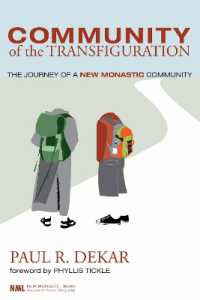- ホーム
- > 洋書
- > 英文書
- > History / World
Full Description
A comprehensive archaeological study of the ceramic finds from a house in Amheida
The House of Serenos: Part I: The Pottery (Amheida V) is a comprehensive full-color catalog and analysis of the ceramic finds from the late antique house of a local notable and adjacent streets in Amheida. It is the fifth book in the Amheida series.
Amheida is located in the western part of the Dakhla oasis, 3.5 km south of the medieval town of El-Qasr. Known in Hellenistic and Roman times as Trimithis, Amheida became a polis by 304 CE and was a major administrative center of the western part of the oasis for the whole of the fourth century. The home's owner was one Serenos, a member of the municipal elite and a Trimithis city councillor, as we know from documents found in the house. His house is particularly well preserved with respect to floor plan, relationship to the contemporary urban topography, and decoration, including domestic display spaces plastered and painted with subjects drawn from Greek mythology and scenes depicting the family that owned the house. The archaeology from the site also reveals the ways in which the urban space changed over time, as Serenos's house was built over and expanded into some previously public spaces. The house was probably abandoned around or soon after 370 CE. The pottery analyzed in this volume helps to refine the relationship of the archaeological layers belonging to the élite house and the layers below it; it also sheds light on the domestic and economic life of the household and region, from cooking and dining to the management of a complex agricultural economy in which ceramics were the most common form of container for basic commodities.
The book will be of interest to specialists interested in ceramology, Roman Egypt, and the material culture, social history, and economy of late antiquity.








